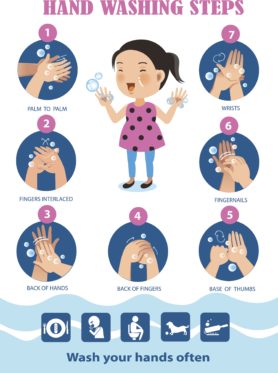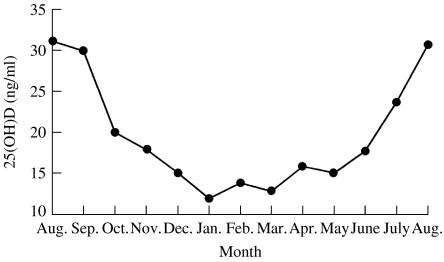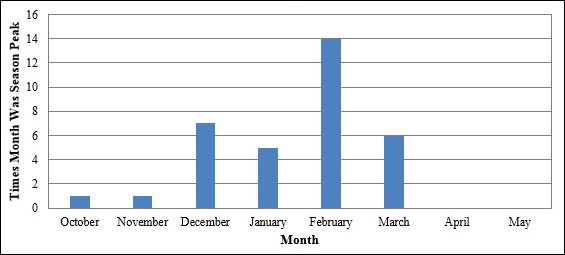Special Free Report From The Motley Fool
“Whoever wishes to investigate medicine properly should proceed thus: in the first place to consider the seasons of the year …” – Hippocrates (circa 400 B.C.)
 Every Fall, like clockwork, we’re implored by pharmacies and doctor’s offices to come in and get our flu shot.
Every Fall, like clockwork, we’re implored by pharmacies and doctor’s offices to come in and get our flu shot.
And, every Fall, like clockwork, we’re told that the flu shot isn’t guaranteed to prevent us from succumbing to the very virus it’s built to defend against.
This year’s vintage, for example, was said to only be 36% effective, at best, according the U.S. Center for Disease Control. That’s hardly an effective sales pitch to convince folks it’s worth their time to inoculate themselves.
Still, while it may not prevent the flu, the flu shot has proven to at least make death a less likely outcome.
Maybe the fact that the flu generally kills roughly 3,500 Canadians (up to 56,000 Americans and nearly 1 million worldwide) each year would be persuasive enough for the majority of us to oblige? Not so fast.
Even in the face of these facts, data from the U.S. suggests that less than half of the population chooses to protect themselves via the flu shot.
But why?
Simply put…a near-majority of those who abstain just don’t think they need it. And a third of them are apparently more worried about the side-effects than actually falling ill.
Then a flu season like the one in our midst rolls around, and folks start it take it a little bit more seriously.
‘Tis the (flu) season… Still.
It’s now late February, but one of the deadliest cold & flu seasons in North America continues to rage on.
Across Canada, flu activity is barely on the decline and has already claimed more than 160 lives, as of February 17. And while it’s hit all ages, to some degree, nearly 50% of all flu cases have affected those 65 years of age or older.

Things haven’t exactly been better down south, either, where officials have been comparing the levels of illness to the swine flu epidemic of 2009. In fact, during one week in January, 10% of all in-country deaths were related to this year’s flu! That figure was down to 8.5% over the week of February 3, but it’s still above levels needed to qualify as an epidemic.
Because of these startling figures, late-season demand for flu shots has rocketed higher.
Take Guelph, Ontario, for example. After two children passed away from flu-related complications in mid-February, pharmacies were flooded with folks looking for a vaccine. Some locations were treating as much as 10-times the normal volume of patients!
This just goes to show the effect our biases can have on our decision making.
Knowing that the flu is a Top 10 killer isn’t enough to convince us to get the shot at the beginning of flu season. We’ll only take action after it affects us locally and/or recently.
That’s too bad because, if roughly 80% of the flu’s target market got their shots, Health Canada suggests we’d reach population-level efficacy or ‘herd immunity’.
Herd immunity makes it difficult for viruses and bacteria to spread because the susceptible population becomes too small to allow for it. Unfortunately, as stated earlier, we are far from clearing this hurdle.
Understanding this, taking further precautions, in addition to getting the flu shot, could be worth your while…

Here’s what else you can do…
Believe it or not, coming down with the flu has as much, or more, to do with your actions than it does anyone else’s.
For the virus to take hold, it needs to find its way in. Quite often, it begins this journey by hitching a ride on your hands after you touch an “infected” doorknob, ATM, office coffee machine, etc…
Once on your hand, it lies in wait until you grab some food, wipe your nose or touch your mouth.
That’s all it takes. It now has access to your inner sanctums. That simple sequence is the main way the flu spreads from host to host.
Knowing this, it should come as no surprise that washing your hands and not unnecessarily touching your face during flu season rank highly on most flu prevention check-lists. Scores of them even go into detail about how you should wash your hands.
What you won’t find on most of them is our #1 tip to survive flu & cold season year-in and year-out…
The big reveal!
There’s no big secret as to why they call it “Flu Season.” It happens every year, around the exact same time.
When you grasp that, it makes sense to examine what exactly happens every year around the beginning of flu season that may cater to the deadly virus.
Well, first off, it tends to get a bit colder. As a result, you and I tend to spend a bit more time indoors and generally have less skin exposed when we do venture outside.
One effect of that is a lower level of vitamin D in our blood. Even outside of colder months, vitamin D deficiency has been recognized as an epidemic in the United States. But the problem is exacerbated in the colder months when exposure to sunlight dwindles.
The following chart from the paper Epidemic influenza and vitamin D, published in 2006, makes this quite clear.

Let’s follow that up with this chart from the U.S. Center for Disease Control of flu activity by month from 1982/3 until 2015/6.

Notice anything?
It would appear that the beginning and end to flu season coincide nicely with the coming and going of winter’s suppressed vitamin D levels. Interesting, eh?
Speaking of inverse relationships…
In another study, researchers discovered that vitamin D levels of 18,883 participants were mirrored the incidence rate of upper respiratory infections. And I bet you can guess what influenza is. Yup…an upper respiratory infection.
To support this finding, a combination of 11 studies undergone in 2013 observed that “supplementation with vitamin D could be an effective means of preventing respiratory tract infection.” It also indicated that lower, daily supplementation of vitamin D appeared more protective than bulk doses every 1 to 3 months.
Fact is that once-daily average doses of only 1600 IU cut the odds of respiratory infections in half!
The Foolish Bottom Line
Learning all of this was enough to convince me to update my flu & cold season survival repertoire. This fall and winter, I have personally been taking 5,000 IU on most days.
Of course, I consulted my doctor prior to beginning this regimen, and we’d encourage you to do the same before engaging in any supplementation. Armed with the data presented by the studies referenced here, plus many more, it should be a rather well-informed conversation.
To your wealth AND health!